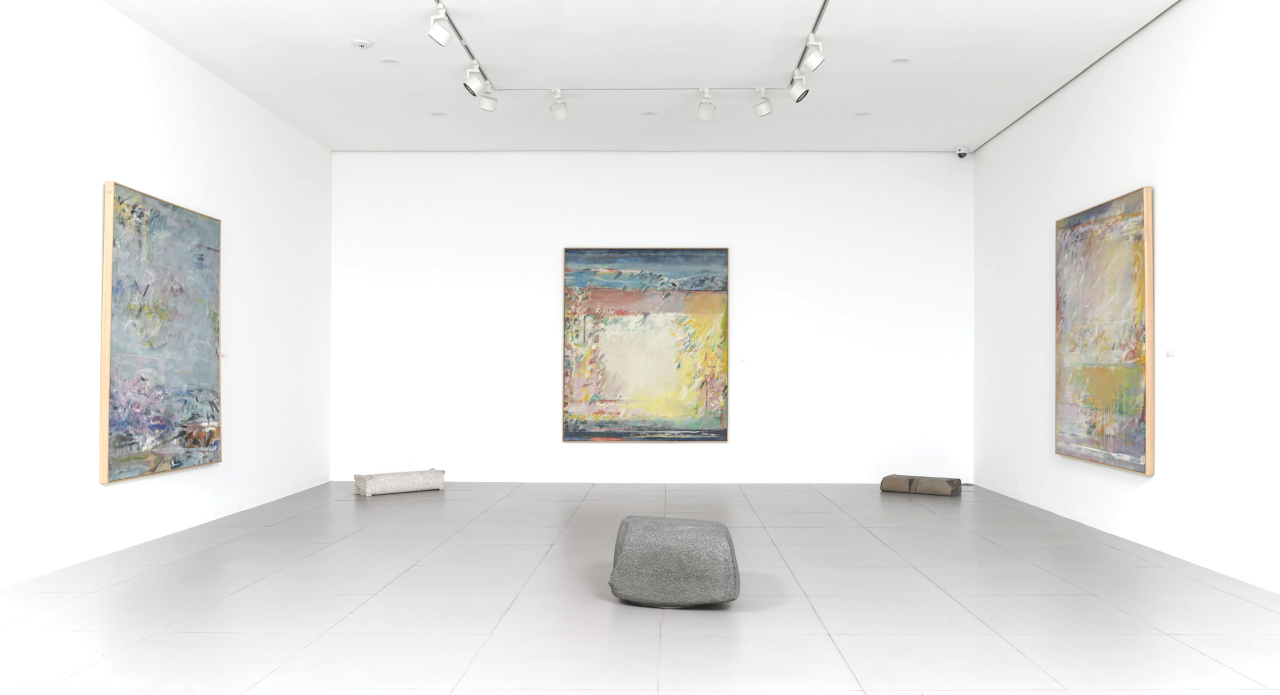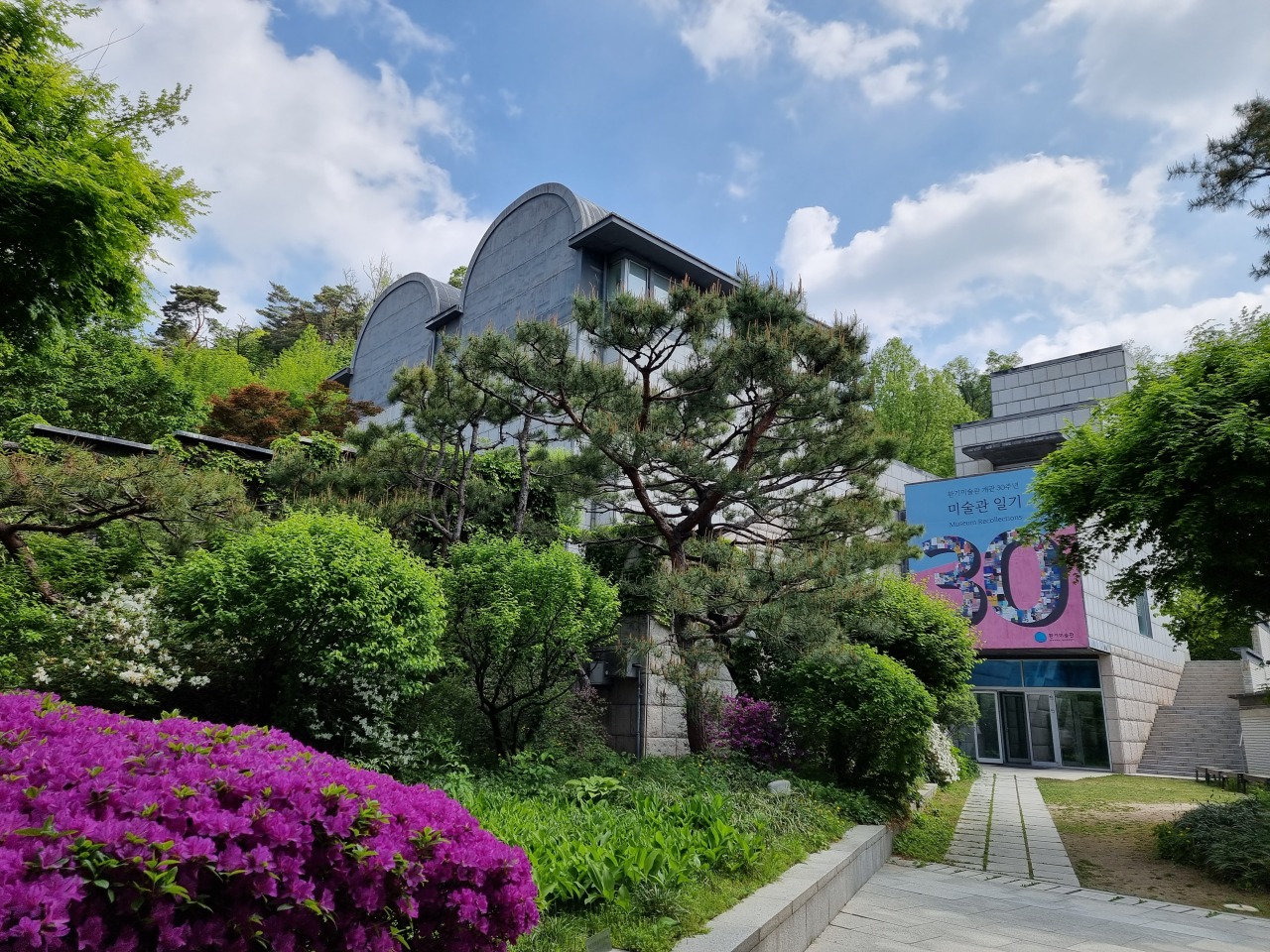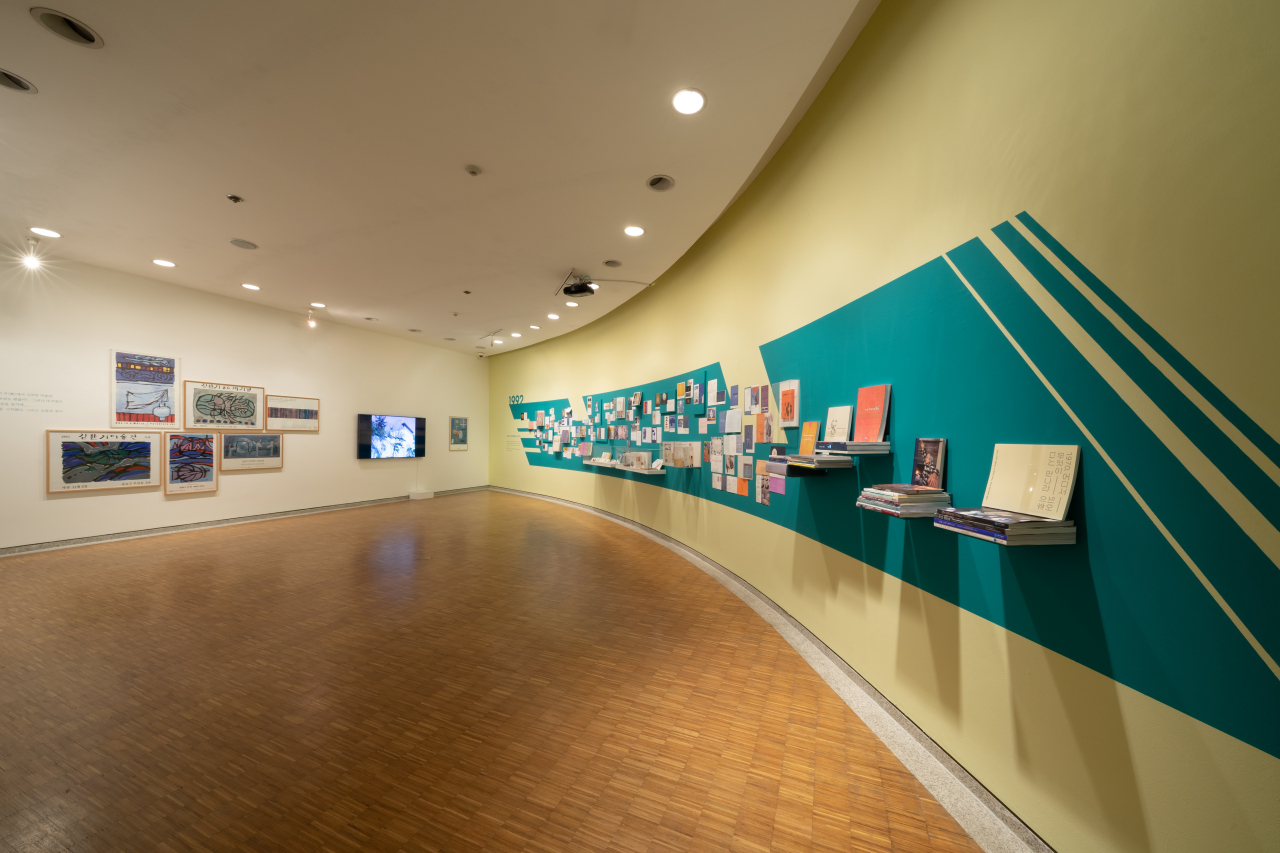Pioneering Korean artists in NY living like family: Kim Whan-ki, Han Yong-jin, Moon Mi-aie
Exhibition at Gallery Hyundai remembers history of three artists of 1960s; Whanki Museum commemorates 30th anniversary
By Park YunaPublished : June 6, 2022 - 09:58

When painter Kim Whan-ki (1913-1974) headed to New York City in 1963, the city was emerging as a new global art mecca attracting artists from around the world. Kim spent the rest of his life there, delving into abstract art and further developing the poetic approach to painting that he had begun exploring in Paris in the late 1950s.
New York City was unfamiliar to the Korean-born artist. There were few artists from his home country who settled in the city and witnessed the latest developments in contemporary art. While he was always accompanied by his wife and lifelong partner Kim Hyang-an, there was another pairing of young married artists -- sculptor Han Yong-jin and Moon Mi-aie -- with whom he shared joys and sorrows in the city. The two couples were like a family, according to Gallery Hyundai, where an exhibition of Kim Whan-ki, Han and Moon is taking place.
Kim and Han together represented South Korea at the Sao Paulo Biennale in 1963, with Kim also serving as a commissioner for Korean artists at the prestigious art biennale of the time. The event became a turning point for the two artists, drawing them to New York City. As an established artist, Kim wanted to further explore contemporary art, forming his own abstract art while Han, an emerging young artist, was given the chance to move to the city through the Institute of International Education.
Han is remembered as being among the first generation of Korean abstract artists -- a stone sculptor whose minimalist works using traditional hand tools and carving methods convey silence and power. After Kim died of a stroke in 1974 at the age of 60, Han created a tombstone for Kim‘s grave at the Kensico cemetery in New York, paying respects to his longtime artistic mentor.
Moon, whose paintings feature powerful and instinctive brushstrokes influenced by Informalism, or Art Informel -- abstract painting that emerged in the 1940s and 1950s in reaction to World War II -- established abstract works of art of her own until she died in 2004.
Gallery Hyundai is shedding light on the legacy of the three artists -- Kim, Han and Moon -- presenting 15 works by each artist at the exhibition, “Kim Whanki’s New York Period, Han Yong Jin and Moon Mi Aie” that runs through June 30. The first floor is dedicated to works by Han and Moon while the second floor focuses on Kim’s works created in New York.
“It’s an exhibition of three artists and they seem to communicate with each other through their works,” said creative director Kim Jae-seok of Gallery Hyundai. “While many may think of a large-scale dot painting by Kim, the exhibition shows that he also worked on small papers that have a different feeling from canvas works.”
The three artists’ legacies also live on at Whanki Museum, where a special exhibition marking the museum’s 30th anniversary is running through July 10. The exhibition looks back on the history of the museum and its past exhibitions, including those of the three artists. The museum held an exhibition featuring Moon and Han in 2019.

Whanki Museum, located on a hill in Buam-dong, central Seoul, was established in 1992 by his wife Hyang-an. It was the first-ever museum here dedicated to a single artist. She also founded the Whanki Foundation in 1979 in New York five years after Kim’s death to prevent the artist’s works from becoming scattered around and to promote his art internationally. His painting “05-IV-71 #200 (Universe),“ which sold for 13.2 billion won ($10.65 million) at a Hong Kong auction in 2020, holds the record as the Korean artwork selling for the highest price at auction.
“They relied on each other at the time, living in a foreign country, inspiring each other. Han admired Kim as a mentor and his stone sculptures are placed across the museum,” said Park Mee-jung, director of the museum.
While the museum’s current exhibition focuses on the museum’s history, it is planning an exhibition of Kim’s works next year to commemorate the 110th anniversary of the artist’ birth, Park said.



















![[KH Explains] Hyundai's full hybrid edge to pay off amid slow transition to pure EVs](http://res.heraldm.com/phpwas/restmb_idxmake.php?idx=652&simg=/content/image/2024/04/18/20240418050645_0.jpg&u=20240418181020)

![[Today’s K-pop] Zico drops snippet of collaboration with Jennie](http://res.heraldm.com/phpwas/restmb_idxmake.php?idx=642&simg=/content/image/2024/04/18/20240418050702_0.jpg&u=)